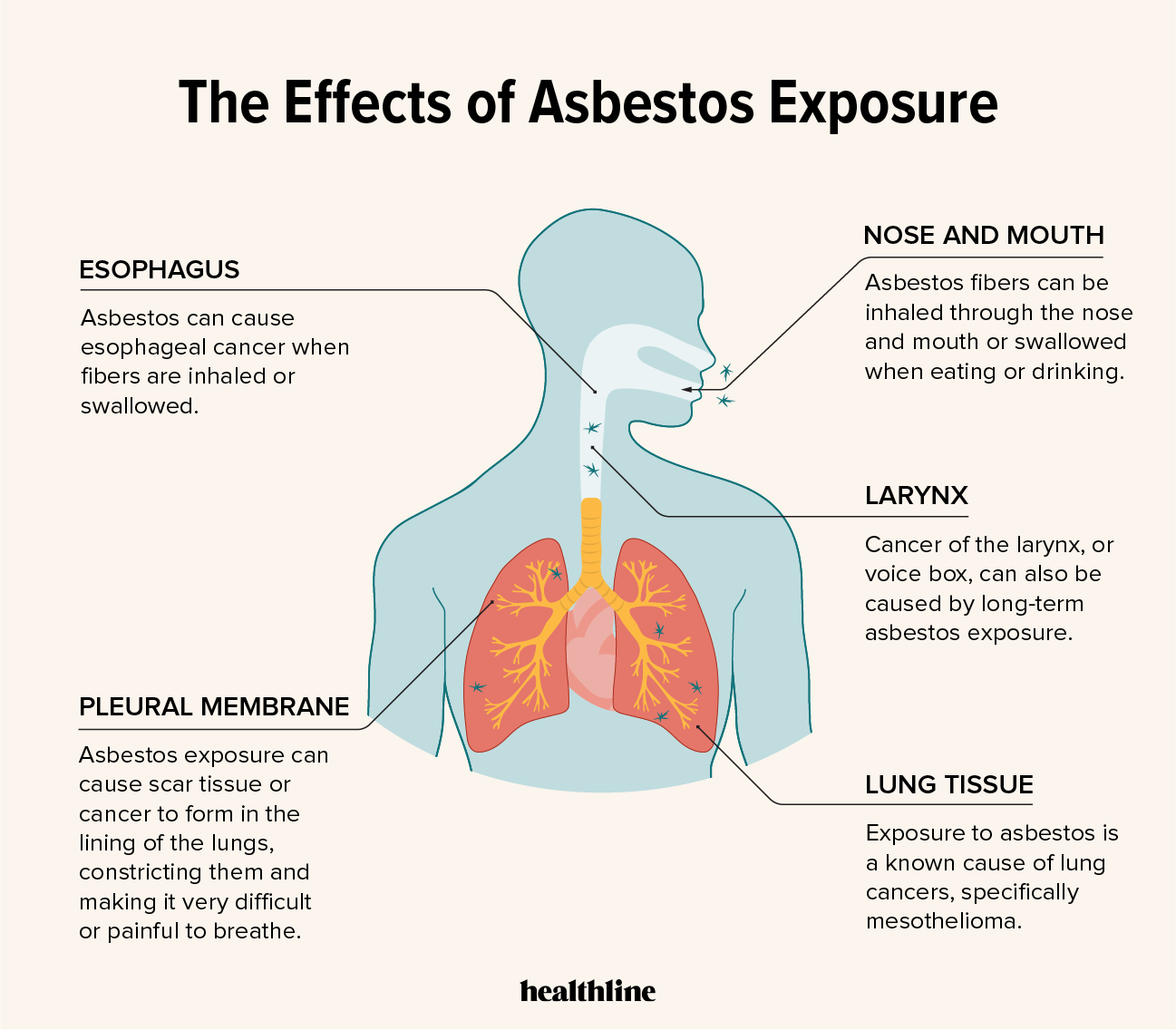
What Is Asbestosis and How Does It Affect Lung Health

Asbestosis is a chronic lung disease that results from the inhalation of asbestos fibers, which primarily affects individuals who have had prolonged exposure in industries such as mining, construction, and manufacturing. This progressive disease is a form of pneumoconiosis, a group of lung disorders caused by the inhalation of various types of dust, including mineral fibers. Not only workers are at risk, but also those who live near industrial sites where asbestos is manufactured or used can be affected by this dangerous material. As the fibers accumulate in the lungs over time, they can lead to significant health complications.
The health repercussions of asbestosis are serious and may include lung scarring and fibrosis. These conditions affect the lungs' ability to function efficiently, causing symptoms such as shortness of breath and reduced oxygen intake. Advanced stages of the disease can lead to chronic bronchitis, a persistent dry cough, and can increase the risk of developing cor pulmonale, lung cancer, and malignant mesothelioma. The latency period for symptoms to manifest is often at least 10 years, making it a silent threat for those previously exposed. While the industrial use of asbestos began to decline in the late 20th century, understanding asbestosis and its implications on lung health remains critical for those at risk.
- What Is Asbestosis?
- Causes and Sources of Asbestosis
- Symptoms and Health Effects
- The Mechanism of Lung Damage
- Risk Factors for Asbestosis
- Diagnosis and Medical Evaluation
- Treatment Options for Asbestosis
- Prevention and Safety Measures
- Conclusion: Understanding Asbestosis and its Impact on Lung Health
What Is Asbestosis?
Asbestosis is defined as a chronic, progressive lung disease caused by the inhalation of asbestos fibers. As a form of pneumoconiosis, it can severely impact lung function, leading to complications such as respiratory failure and heart problems. Characterized by inflammation and scarring of lung tissue, it impairs the lungs' ability to transport oxygen into the bloodstream and can significantly reduce overall respiratory capacity. Workers with long-term exposure to asbestos face the highest risk of developing this condition.
The diagnosis of asbestosis is often confirmed through imaging techniques, such as an asbestosis xray, which can reveal a distinct pattern of lung damage. In cases where an x-ray may not provide a clear diagnosis, further tests, including CT scans or lung function tests, may be employed. The disease is progressive, meaning it can worsen over time if exposure to asbestos continues.
Causes and Sources of Asbestosis
The primary cause of asbestosis is exposure to asbestos fibers. Asbestos is a natural mineral that was widely used in construction materials such as insulation, roofing, flooring, and cement products due to its fire-resistant properties. Its durability and resistance to corrosion made it a popular choice for various applications, including shipbuilding, automotive manufacturing, and household products.
- Occupational exposure: Workers in industries such as construction, shipbuilding, and manufacturing are at the highest risk.
- Environmental exposure: Individuals living near asbestos mines or manufacturing plants can also be exposed to asbestos fibers.
- Secondary exposure: Family members of workers who handle asbestos may be unknowingly exposed through clothing or equipment brought home.
Symptoms and Health Effects
The symptoms of asbestosis typically emerge after many years of exposure. Common symptoms include:
- Shortness of breath: Initially occurring during physical exertion, it can progress to become noticeable even at rest.
- Dry cough: A persistent, dry cough is a common symptom that could worsen over time.
- Chest pain: Some individuals may experience discomfort or tightness in the chest.
- Fatigue: Chronic fatigue is also reported among individuals suffering from this condition.
As the disease progresses, more severe health issues may arise. Patients may develop complications such as cor pulmonale, which is a condition characterized by right heart failure due to lung disease. Additionally, there is an increased risk of lung cancer and malignant mesothelioma, a cancer specifically associated with asbestos exposure.
The Mechanism of Lung Damage
When asbestos fibers are inhaled, they can become lodged in the lung tissue. The body attempts to remove these fibers through immune responses, but the fibers often evade these defenses due to their sharp, needle-like structure. Over the years, the persistent presence of these asbestos fibers triggers an inflammatory response, leading to the formation of scar tissue, a process known as fibrosis. This scarring can stiffen the lungs, making it increasingly difficult to breathe and transport oxygen.
Moreover, the accumulation of scar tissue can disrupt normal lung function, causing the lungs to continue to lose elasticity over time. Patients with asbestosis may also experience complications related to obstructive lung diseases and diminished lung volumes, affecting their overall quality of life.
Risk Factors for Asbestosis
Several factors can elevate a person's risk of developing asbestosis:
- Occupational exposure: Individuals who work in industries known for asbestos use are at the highest risk.
- Duration of exposure: The longer the exposure, the greater the risk.
- Type of asbestos: Different types, such as amphibole asbestos, may pose a higher risk than others.
- Cigarette smoking: Smokers with asbestos exposure have a significantly greater risk of developing lung-related diseases.
Diagnosis and Medical Evaluation
Diagnosing asbestosis usually involves a thorough medical history, assessment of occupational exposure, and a physical examination. Physicians may perform various imaging tests, including:
- X-rays: An asbestosis xray can help identify characteristic lung changes associated with the disease.
- CT scans: These scans provide a more detailed view of lung tissue and can help confirm the diagnosis.
- Lung function tests: Measuring how well the lungs are functioning can provide insights into the extent of lung damage.
In some cases, a biopsy may be necessary to confirm the presence of asbestos fibers and exclude other lung diseases. Early diagnosis plays a crucial role in managing the disease and monitoring potential complications.
Treatment Options for Asbestosis
While there is currently no cure for asbestosis, treatment options focus on managing symptoms and improving quality of life. Treatment strategies may include:
- Medications: Corticosteroids can help reduce inflammation and symptoms associated with lung disease.
- Oxygen therapy: Providing additional oxygen can assist those with shortness of breath and improves overall oxygen saturation levels.
- Pulmonary rehabilitation: These programs assist patients in improving their physical function and managing symptoms through exercise and education.
- Lung transplants: In severe cases, lung transplantation may be an option for highly selected patients.
Regular monitoring and follow-ups with healthcare providers are essential to manage health and detect potential complications early.
Prevention and Safety Measures
Preventing asbestosis is primarily about minimizing exposure to asbestos. Important safety measures include:
- Regulations and guidelines: Strict adherence to safety regulations in workplaces that may involve asbestos is essential.
- Personal protective equipment (PPE): Workers should be trained to use appropriate PPE when dealing with potential airborne asbestos particles.
- Regular health screenings: Individuals who work in high-risk environments should have routine medical evaluations to detect any signs of lung damage.
- Awareness and education: Education about the dangers of asbestos and asbestosis is vital for workers and communities.
Conclusion: Understanding Asbestosis and its Impact on Lung Health
asbestosis is a serious lung disease caused by long-term exposure to asbestos, leading to significant health complications. Its progressive nature means that symptoms may not manifest for years, complicating early diagnosis and treatment. Understanding the causes, risk factors, and symptoms of asbestosis is critical for at-risk individuals and healthcare providers. Protecting oneself from asbestos exposure through education, safety measures, and adherence to regulations is vital for long-term lung health.
As we continue to increase awareness of asbestosis and educate communities about its risks, we can take proactive steps to prevent this disease and its associated health impacts, ensuring healthier futures for those at risk and their families.
Did you find this article helpful? What Is Asbestosis and How Does It Affect Lung Health See more here Education.
Leave a Reply






Related posts